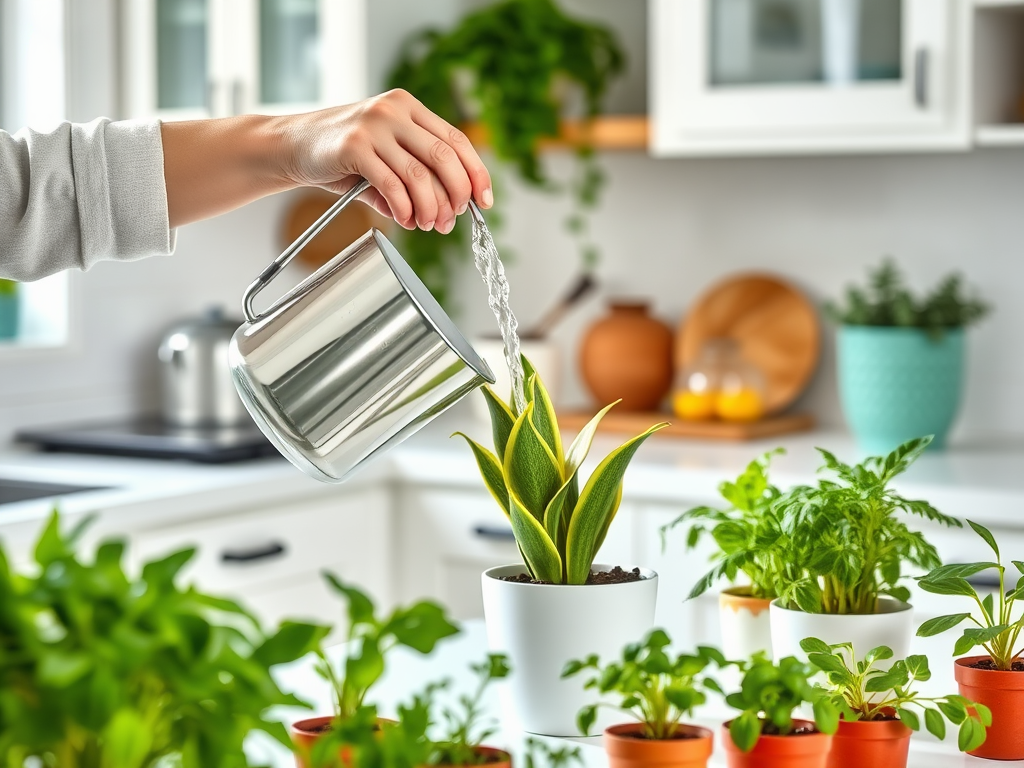Welcome to the world of Snake Plants (Sansevieria), a green marvel that has taken the indoor gardening scene by storm. Known for their sturdy, upright leaves and striking appearance, these plants are more than just a pretty face. They act as air purifiers, making them an excellent addition to any home. Despite their resilient nature, fostering new growth can seem daunting for many plant enthusiasts. Fear not! This guide is designed to illuminate the path to a flourishing Snake Plant, filled with actionable tips and scientific insights.
Many novice gardeners overlook the subtleties that contribute to a Snake Plant’s growth. It’s not just about water; it’s a harmonious blend of light, temperature, humidity, and care. This beloved houseplant requires the right conditions to really thrive, transforming your space into a vibrant oasis. Whether you’re a seasoned plant caretaker or just starting out, understanding these elements will help you coax out new growth and maintain the health of your greenery. After all, every plant has its unique requirements, and the Snake Plant is no exception.
Ideal Conditions for Growth

To unlock the full potential of your Snake Plant, creating ideal conditions for growth is vital. These plants are known for their ability to thrive in a variety of settings, but optimizing their environment encourages quicker and healthier growth. One of the foremost factors is light. While they can tolerate low-light conditions, exposing them to indirect sunlight significantly boosts their vitality.
In terms of temperature, Snake Plants prefer warmer climates, ideally between 60°F to 80°F. They can withstand a range of temperatures, but anything below 50°F could stress the plant, stunting its growth. Humidity levels are another key consideration; Snake Plants thrive in moderate humidity but are capable of adapting to drier air. Understanding and adjusting these factors will set the stage for your Snake Plant to flourish.
| Factor | Ideal Conditions |
|---|---|
| Light | Bright, indirect sunlight |
| Temperature | 60°F – 80°F |
| Humidity | Moderate (can tolerate low levels) |
Watering Practices

Watering is perhaps the most critical aspect of Snake Plant care. Overwatering is a common mistake, leading to root rot and other problems. These plants prefer to dry out between waterings, so it’s essential to assess soil moisture before adding more water. Generally, check the soil every couple of weeks, depending on your home’s humidity levels.
Signs of underwatering include shriveled leaves and slow growth, while overwatering can manifest as yellowing leaves and mushy roots. To maintain a healthy balance, aim to water only when the top inch of soil feels dry. This practice will encourage robust root development and lush growth while avoiding common pitfalls.
Soil and Fertilization
The soil you choose plays a significant role in your Snake Plant’s health. A well-draining potting mix is crucial; incorporating materials like sand or perlite can improve drainage considerably. An ideal soil composition balances moisture retention and drainage, ensuring that the roots do not become waterlogged—one of the leading causes of plant failure.
In addition to soil type, fertilization cannot be overlooked. Snake Plants generally require less fertilizer than other houseplants. However, applying a diluted liquid fertilizer every few months can promote new growth. Remember, excessive fertilization can lead to nutrient burn, so moderation is key.
Propagation Techniques
Propagation is an enjoyable way to expand your Snake Plant collection. The two most common methods are leaf cuttings and division. Leaf cuttings involve taking a healthy leaf, cutting it into sections, and placing them in soil. In contrast, division requires separating the root system of an existing plant to create new ones. Both methods are effective but may require patience as new growth can take some time to appear.
- Leaf Cuttings: Takes about 2-3 weeks to root.
- Division: Can yield immediate results with new growth.
- Best Time: Spring or summer is ideal for propagation.
Troubleshooting Common Issues
Every houseplant gardener faces challenges; recognizing and addressing these issues quickly is essential for promoting growth. Common pests like spider mites and mealybugs can threaten your Snake Plant, so monthly inspections can prevent infestations. If you notice discolored leaves or stunted growth, these could be signs of a more significant problem.
Repotting can also be a necessity for Snake Plants that have outgrown their containers. A crowded root system can hinder growth and vitality, so it’s smart to repot them every two to three years. Keeping a watchful eye on your plant will help ensure it remains healthy and productive.
Conclusion
Encouraging new growth in your Snake Plant is a rewarding endeavor that requires attention to several key factors. From providing optimal light to mastering your watering schedule, each element plays a role in the overall health of your houseplant. By following the guidelines outlined in this article and regularly monitoring the condition of your plant, you will not only foster growth but also enjoy a lush, vibrant addition to your home.
Frequently Asked Questions
- How quickly do Snake Plants grow? Snake Plants typically grow slowly, with new growth appearing every few months under optimal conditions.
- Can I place my Snake Plant outside? Yes, but ensure it’s in a shaded area to prevent sunburn; indoors is preferable for consistent care.
- Is it safe for pets? While Snake Plants are relatively low in toxicity, they are still mildly toxic to pets if ingested.
- Can I use regular potting soil for my Snake Plant? Yes, but adding sand or perlite helps improve drainage, which is crucial for Snake Plant health.
- What are the signs of a healthy Snake Plant? Healthy Snake Plants have upright leaves that are firm and free of spots or discoloration.